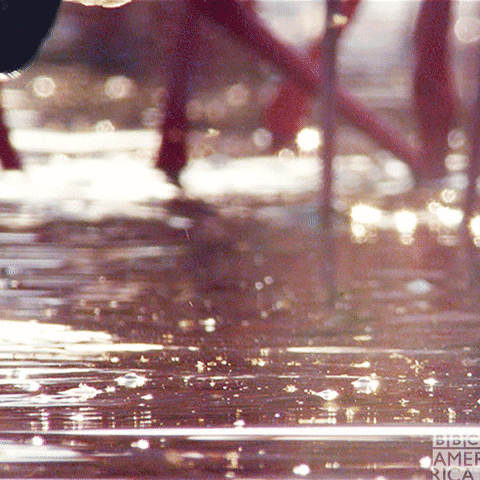Let's create continuous conversations about climate change education: Spreading the Sediment of Science!
How Do Flamingos Feed? Tornados
May 27, 2025

Imagine you’re a tiny brine shrimp, chillin’ at the bottom of a Chilean stream. Suddenly, you find yourself sucked into a swirling vortex and pulled toward the surface. Was it a tornado? A typhoon? Nope. Just a feeding flamingo.
Exactly how flamingos eat has been a puzzle to zoologists. They have long assumed that the tall, pink birds simply stuck their upturned beaks beneath the water and waited for tiny creatures to swim by. But Victor Ortega Jiménez wasn’t so sure. He's a University of California Berkeley biologist.
“We are challenging the idea that flamingos are just passive filter feeders,” he told The New York Times.
Ortega Jiménez trained three Chilean flamingos at the Nashville Zoo. He taught them to eat from trays equipped with high-speed cameras and motion-detecting lasers. His team also created a working model of a flamingo’s beak and tongue. They did so using 3D imaging software to mimic flamingo feeding. They then recorded what happened to the surrounding water. The result: hungry flamingos produce tiny tempests.
“Just as spiders produce webs, flamingos produce vortices,” Ortega Jiménez explained.
First, flamingos stomp their feet. That kicks up the krill, worms, and shrimp that the birds eat. The flamingos then dip their beaks into the water. They bob their heads and chatter in a way that whips the water around their heads into a whirlpool. The whirlpool sucks in all those tasty creatures. In essence, flamingos feed via tornado.
Ortega Jiménez's research was published this month. It's in the journal Proceedings of the National Academy of Sciences. He hopes it may one day lead to ways for humans to filter harmful particles like microplastics from our water supplies.
Reflect: What’s something surprising you’ve noticed about an animal or the world around you?
Gif of flamingos eating from GIPHY.





